#mammon hoole
Text
Depressing lack of Galaxy of Fear fan content out there :(
8 notes
·
View notes
Text
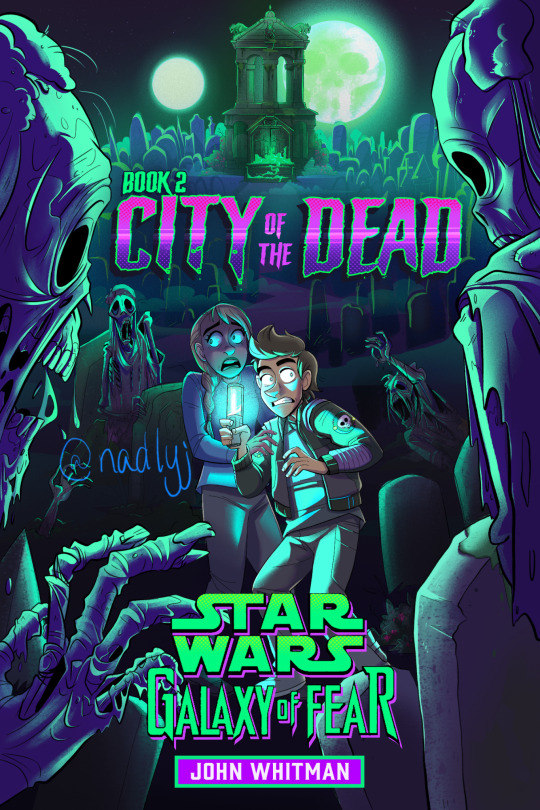
Drawing Galaxy of Fear covers- book 2!
I think this is my favourite book in the series. Inside BW illustration to come!
#star wars#star wars galaxy of fear#star wars legends#tash arranda#zak arranda#mammon hoole#goosebumps#star wars fanart
15 notes
·
View notes
Text
Sabacc Oracle Cards #8 - The Eight of Flasks (The Changelings)
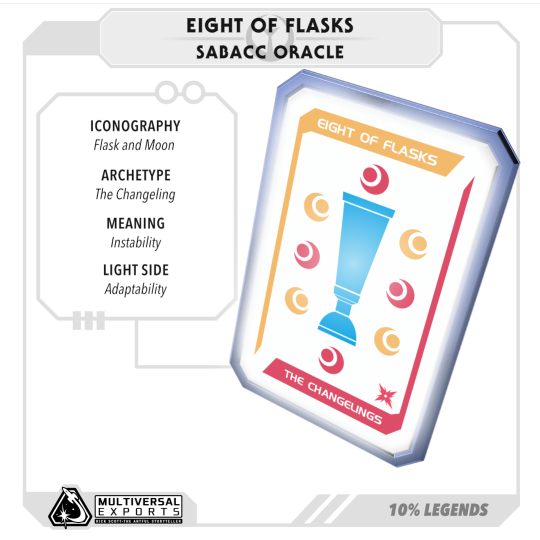
The Eight of Flasks (The Changelings) is the card of: Mammon Hoole!

#star wars art#star wars design#star wars reference#star wars fanart#star wars#star wars roleplay#sabacc#star wars lore
1 note
·
View note
Photo
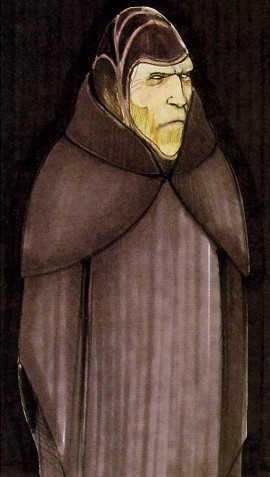
Senior Anthropologist Mamon Hoole, later known as (Indeterminate) Hoole, was a Shi’ido professor who specialized in using his racial shapeshifting abilities to investigate alien planets in great detail, which he did on Tatooine shortly after the Clone Wars, after his scientific work got him exiled from the Empire.
Source: The Illustrated Star Wars Universe (1995) which is incidentally the single best Star Wars book.
#mammon hoole#star wars aliens#the art of star wars#ralph mcquarrie#star wars#eu#expanded universe#star wars legends#fav
33 notes
·
View notes
Text
If Alex was a kid again (Solomon’s fault)
Kid Alex: *Has a hool-a-hoop around her waist* All aboard the choo choo train
Mammon: OI what are you doing small thing?!
Kid Alex: I’m on the choo choo train! Wanna join me?
Mammon: ...
Mammon: Fine! I’ll go get Levi and beel first! *Goes too beel and levi*
Kid Alex: All aboard the choo choo train!!
Mammon: *comes back with a hool-a-hoop around his waist and with beel and levi*
Levi: what are we doing? *looks at mammon*
Mammon: we’re getting on the choo choo train
Beel: the choo choo train?
Levi: Oh my god
Kid Alex: all aboard the choo choo train!
Mammon: *puts his hool-a-hoop around Alex’s waist as well and starts walking behind her* c’mon! Get on the darn train!
Beel: Alright alright *gets a hool-a-hoop around his waist and mammon’s*
Levi: *sighs and gets a hool-a-hoop and puts it around his and beel’s waist*
Kid Alex: all aboard the choo choo train!
Mammon: this is actually kinda fun...
Beel: *smiles* yeah
Levi: I kinda agree...f-for now!
Kid Alex: *Leading the now hool-a-hoop choo choo train*
#obey me shall we date?#obey me beelzebub#obey me leviathan#obey me mammon#obey me Alex#My MC#text#It was Solomon’s fault that Alex turned into a kid and has too stay like that for a week#kid Alex#ACK-#The Hool-a-hoop choo choo train
19 notes
·
View notes
Text
Star Wars Alien Species - Togorian
Togoria was a planet in the Mid Rim and the homeworld of the Togorians. The temperate world of Togoria, featuring isolated cities among vast savannas, deep canyons and great, deep forests.
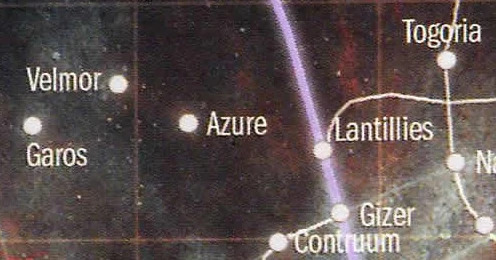
Togorians evolved as nomadic hunters of creatures like the bist and etelo. In turn, flying reptiles called liphons preyed upon the Togorians. Primitive Togorians noticed that slightly smaller flying reptiles, mosgoths, were also targeted by liphons who attacked their nests and stole their eggs. Togorians began camping near the mosgoths for mutual protection, eventually domesticating them as mounts. Soon, a rift in their society developed—while males wanted to continue their lifestyle as nomads, females wanted the comfort and safety of permanent camps. In other species, the conflict would have led to one lifestyle winning over the other, but both male and female Togorians were too stubborn.

Eventually, the males continued their nomadic ways, riding their mosgoths and hunting, and competing in contests of prowess. Meanwhile, the females stayed in villages with pre-pubescent children, with those communes eventually growing into cities. While the males continued to hunt in the wilderness, the females tended domesticated herds and developed technology. Males would visit their mates for about a month each year, but the sexes lived completely separate lives otherwise. Whether in spite of the separation of the sexes, or because of it, Togorians were monogamous, and devoted to their chosen mates.
The Togorians were first discovered by galactic society when the Mandalorians tried to conquer Togoria. When the Togorians united to defend their planet, the Mandalorians were so impressed with the Togorians' fighting tactics and techniques that they recruited them. These Togorians were among the first non-Taung or non-Human people to join the Mandalorian ranks. When the Mandalorian Neo-Crusaders were defeated, some Togorians turned to mercenary work, bounty hunting, and joining space pirate colonies organized and controlled by the Hutts.

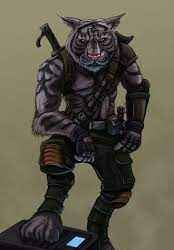
In 32 BBY, a band of Togorian pirates used their bulk freighter and decoy space cruiser to lure the Scimitar, the Sith Lord Darth Maul's Sith Infiltrator, into a trap. Maul was on his way to Tatooine to complete an important mission given him by Darth Sidious—to first track, then eliminate the two elusive Jedi ambassadors to Naboo, Qui-Gon Jinn and Obi-Wan Kenobi, before capturing Queen Amidala and returning her to her homeworld, where she would be constrained to sign a treaty with the Trade Federation, making its invasion and occupation of the planet "legal". It was then, as Maul came out of hyperspace above Tatooine, that the Togorians attacked. After the ambushers aboard the pirate cruiser were sent to search, plunder, and retrieve Maul's ship, they found it devoid of passengers, and their captain commanded them to return to the freighter; indeed, the Zabrak assassin had jettisoned his personal escape pod to evasively infiltrate and attack the occupants of the larger pirate vessel, killing all on-board including its captain. Darth Sidious was adamant regarding Maul's critical clandestine mission, that there were to be no witnesses to Maul's presence in Tatooine space. One lingering pirate assailant, Hela-Tan, viciously fought with Maul even as the Sith Lord, having at last recovered the Scimitar, was executing his escape from the pirates' docking bay, to continue his mission to Tatooine. The pirate succeeded in administering a brutal wound to Maul's leg before the Togorian himself was sucked into space by the explosive blast of the Togorians' Sith-sabotaged freighter, which had detonated upon its bridge crew's ignition of its engines.


During the Clone Wars Togorians aided General Grievous in the Battle of Togoria. In the final days of the Galactic Republic, a Togorian Jedi youngling escaped Order 66.
During the Imperial era, they were ruled by a male hereditary monarch, titled the "Margrave of Togoria". The Margrave lived like any other nomad, save only that it was a great honor to be allowed to pitch a tent in his camp. Either his wife or a close blood relative governed the female population from the city of Caross, which was effectively the planetary capital.

Males rarely left their homeworld, though a few were pirates and mercenaries, or were unwillingly forced offworld to search for a missing mate. Since the only offworlders they met were smugglers, pirates, or slavers, they considered most of them no better than rossorworms. They found droids and Imperial stormtroopers (or "Metal Men" and "White Shells", as they called them) particularly objectionable. Offworlders on Togoria found trespassing outside Caross would be returned to the females of Caross to be dealt with. On a second offense, they were staked out for the liphons to eat. Despite this, male Togorians could be amiable towards offworlders, especially those not dependent upon technology. Han Solo and Mammon Hoole were among those who were honored by the Togorians. Solo was once invited by the Margrave to stay on Togoria and hunt with the males, while Hoole even pitched his tent in the Margrave's camp (though the Shi'ido sentientologist may have been taking the form of a Togorian at the time.)
Female Togorians, on the other hand, were willing to deal with outsiders. They stereotypically enjoyed luxury, though not to the point of decadence, and tended to be acquisitive, industrious, and cunning. Females who could afford it often rewarded themselves with a few years on resort planets such as Bespin or Ord Mantell. The females had developed fairly high technology on their own, showing expertise in solar energy. By the Imperial era, they had almost enough technical expertise to develop their own starships.
Offworlders had difficulty negotiating with Togorians in order to gain access to their planet's natural resources, so their trade was limited. Female Togorians were, however, a valuable market for comlinks, datapads, small droids, and other small electronics and luxuries. Mastercrafted scimitars or "sc'rath" produced by male Togorians fetched high prices on offworld weapons markets. Both sexes, however, preferred to walk or ride mosgoths rather than ride vehicles.

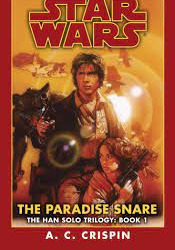
Han Solo's friend Muuurgh and his mate Mrrov were Togorians, as well as the Jedi Bhixen.
As a species, they were large bipeds, with retractable claws on their hands and feet. They were covered in gray-white to black fur, often with more colorful spots or stripes.They had extremely dense bone tissue, allowing them to endure greater physical trauma than beings with similar physiques. Their piercing jade eyes provide them with excellent vision, even in low light conditions. Female Togorians were up to 2.2 meters or 7.2 feet tall, while adult males ranged up to 3.0 meters or 9.8 feet and weighs 170 kilograms or 375 pounds.
Togorian age at the following stages:
1 - 9 Child
10 - 14 Young Adult
15 - 44 Adult
45 - 64 Middle Age
65 - 79 Old
Examples of Names: Dankin, Dh'rang, H'sishi, Keta, Mezgraf, Mrrov, Muuurgh, Qrrulla, Rowv, Ruukas, Sarrah, Seendar.
Languages: Togorians learn their own language of Togorian, as well as the standard tongue of Basic.
23 notes
·
View notes
Text
Wookiepedia on the Dola Tree
The original Texts should be read Here and Here!
The dola was a near-sentient* tree that was native to the planet Aruza. It produced small flowers that were sensitive to touch. When disturbed, the dola's flowers withdrew into thin shoots; however, if tenderly coaxed out, the flowers could be harvested for the thick juice they exuded.
The Aruzans then processed the juice into a fluid used as an antibiotic.
*Near-Sentient and Semi-Setient seem to be the same in this regard. Which mean that the Dola Tree would be able to use and understand tools and languages!
Definition of Sentience
According to The Essential Guide to Alien Species, ghostwritten by Ann Margaret Lewis based on data collected by Senior Anthropologist Mammon Hoole, "a species given the sentient definition is considered able to reason and understand abstract metaphorical concepts and ideas, make and use tools, and communicate with written or spoken language."
Species that did not reason at all and survived via their natural instincts were classified as non-sentient, or sometimes as sub-sentient. Non-sentience did not imply the lack of any form of intelligence. Species that appeared to have emerging sentience were classified as semi-sentient. These included species that had very primitive capabilities to manipulate tools, use language, and/or solve problems. Examples included the Arkanian dragon, the Zillo Beast, the Bafforr tree, the wampa, and the sarlacc.
In the waning years of the Galactic Republic, an Annual Mid-Rim Domesticated Sub-Sentient Show was held for non-sentient creatures. The Galactic Empire would often recategorize sentient species such as the Wookiees as non-sentient, allowing it to enslave them without formally violating the laws protecting sentient beings from such abuse.
#inspiration#BLESS WOOKIEPEDIA I LOVE BROWSING THROUGH THE STAR WARS BOTANIC#also! YES A CANON ANTIBIOTIC BASED ON A ACTUAL CANNON PLANT! JO!#reference
1 note
·
View note
Text

Galaxy of Fear fam... minus Deevee
#star wars galaxy of fear#galaxy of fear#star wars#fanart#star wars fanart#star wars rebels#star wars legends#nadlyjsw#natasplundart#zak arranda#tash arranda#shiido#star wars eu#mammon hoole
30 notes
·
View notes
Text
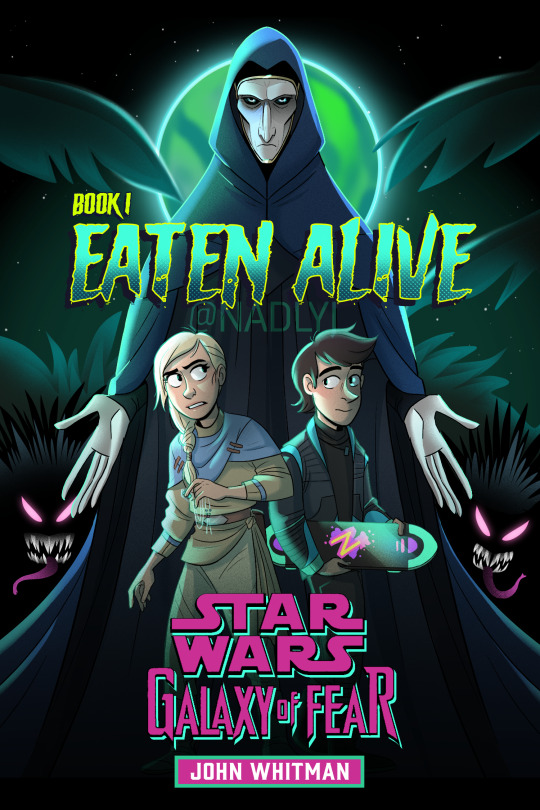
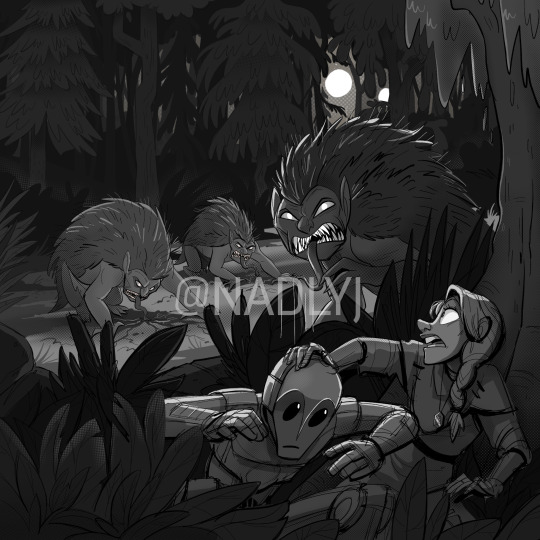

I had this really ambitious idea to draw a cover and one or two b&w illustrations for each of the Galaxy of Fear books for my inktober... hahahahahahahaha, I got to book one.
That being said I do have thumbnails of some of the other books... so it might still happen... we'll see. It's kinda of a passion project I'd really like to see through (one of a bajillion but hey)
The Smada one was my first idea, but then I was like... these are scary books, I should be drawing scary things. Also, I couldn't draw Smada without him looking weirdly adorable so I just avoided it and started the other one. Also, also, the sketchier approach was much more fun and satisfying.
Also, also, also. The GoF books have literally been my hyperfixation for the last two years (and a regular interest of mine since I was a kid) So I have, so much fanart, prose and even scripts of these books...
yep.
#star wars fanart#star wars#star wars legends#star wars fanfiction#star wars the clone wars#sw fanart#star wars galaxy of fear#galaxy of fear#nadlyjsw#natasplundart#natasplund#mammon hoole#tash arranda#zak arranda#shiido
14 notes
·
View notes
Photo

Necropolis from Galaxy of Fear: City of the Dead. It's still pretty bare, I might add something or such. It's based off of the Myra Necropolis.
#star wars#star wars fanart#star wars rebels#star wars clone wars#star wars galaxy of fear#star wars legends#mammon hoole#shiido#tash arranda#zak arranda#necropolis#myra necropolis#layout design#nadlyjsw#natasplundart
18 notes
·
View notes
Text
Star Wars Alien Species - Caamasi
The Caamasi from Caamas were a sentient mammalian species known for their compassionate and peace-loving nature; indeed, the name Caamasi came to mean "friend from afar" and "stranger to be trusted" in some languages across the galaxy.

Caamasi possessed great moral strength and respect for others. They were among the galaxy's finest diplomats and mediators, often solving severe conflicts in a matter of days. Indeed, as the Jedi Order began to evolve on Ossus, Jedi scholars studied on Caamas and drew upon the teachings of Hespecia Tik'kla when creating the Jedi Code. Many millennia later, Arden Lyn would cite Caamasi influence on the Jedi Order as being a factor in the schism between the Order and the Legions of Lettow.

During the last stages of the Pius Dea Crusades around 11,000 BBY, the Caamasi opposed the Pius Dea-controlled Galactic Republic's inquistions against domestic opposition. They succeeded in persuading the Jedi to end their centuries-long Recusal and collaborated with the Jedi and Alsakani to mastermind an anti-Pius Dea heresy which developed into the Renunciates movement by 10,967 BBY. During the Seventh Alsakan Conflict, the Caamasi were part of a broad anti-Pius Dea coalition which toppled the sect and ended its grip on the Republic. Following the Battle of Uquine, the last Pius Dea Supreme Chancellor Contispex XIX was tried and imprisoned for life on Caamas.
During the last days of the Galactic Republic, Senior Anthropologist Mammon Hoole witnessed the Caamasi prowess firsthand when they negotiated peace between the Kubaz and the Verpine. Unfortunately, the Caamasi pacifism was at odds with Emperor Palpatine's New Order, and they suffered greatly under Imperial rule. A few months after the end of the Clone Wars, the surface of their homeworld, Caamas, was bombarded, killing millions. After the destruction of their planet's environment, many refugees moved to Alderaan, Kerilt, and Susevfi. The bombardment was aided by a group of Bothans who sabotaged Caamas' shield generators. The Caamas Document detailed their involvement. Although many demanded that the Bothans purchase an uninhabited planet and terraform it according to Caamas' specifications, the Caamasi chose to forgive those guilty of harming them.
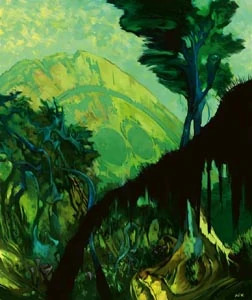
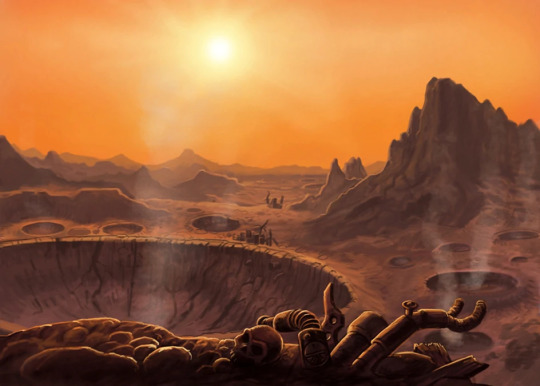
Following years of struggling to repopulate the species, the Caamasi Remnant and its leader, Elegos A'Kla, joined the New Republic Senate and participated in the hazardous political turmoil surrounding the Yuuzhan Vong War.
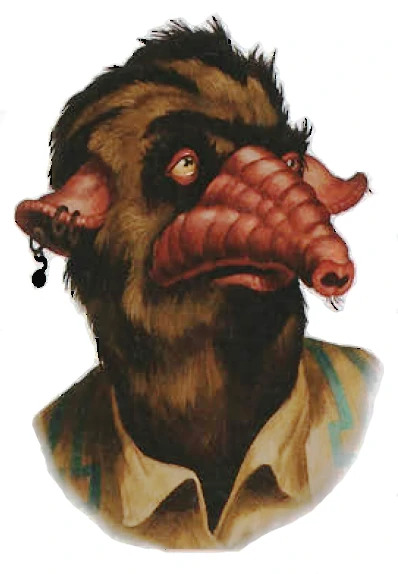
A pacifist race, culture on Caamasi evolved around the basic tenets of peace and social justice; influencing the evolution of the Jedi Order and their service as Knights of the Galactic Republic. Working as explorers, diplomats, and artists, the Caamasi were a monogamous people who valued single partners while mating and starting a family. So culturally ingrained was this notion that there was great debate among the species following the devastation of their homeworld. The Caamasi who were off-world at the time considered evolving to a position of polygamy so as to regrow the population. While the argument was one of survival, many sociologists familiar with the culture of the Caamasi believed that they would not accept the idea. The famed celebration known as the Rainbow of Sunshine Festival was held on Caamas annually and beloved by the populace.

A species of furry mammalians, the Caamasi were covered in dense grey or brown fur and had a spicy, woody body scent that was similar to that of Corellian whiskey. They had two, long arms with thin, three-fingered hands, and two pointed ears which stuck out from the sides of their heads. They also had extremely acute senses of smell, with their nose positioned at the end of a tooth-filled snout.
Caamasi had the interesting ability to share vivid memories called memnii with their near relatives and Force-sensitives, especially members of the Jedi Order. A memnis was as vivid to one who received it as it was to the one who participated in the event remembered. Their peace-loving natures were accounted for in part due to memnii, as having a memory of killing or harming would be particularly strong, becoming unbearable in time, and something Caamasi would seek to avoid except in defense of themselves or others, for which case they would accept their burden.
A typical Caamasi stands 1.8 meters or 5.9 feet tall and weighs 80 kilograms or 176 pounds.
Caamasi age at the following stages:
1 - 11 Child
12 - 15 Young Adult
16 - 49 Adult
50 - 76 Middle Age
77 - 89 Old
Examples of Names: Elegos A'Kla, Ylenic It'kla, Releqy, Tegas Sulkec, Meqli Li karin.
Languages: Caamasi speak, read, and write their language of Caamasi, as well as Basic.
After the devastation of the planet, the surviving Caamasi were able to keep the language alive through the continued use and sharing of memnis from generation to generation.
7 notes
·
View notes
Text
Star Wars Alien Species - Gand
The Gands evolved on the planet Gand. There, they spread across the surface, founded pocket colonies, and developed a planetary monarchy.Their homeworld was discovered by outsiders sometime prior to 3951 BBY, during the Kanz Disorders. An inhospitable and isolated world located in the Shadola sector, just beyond the Centrality and near the border of Wild Space, the planet was not located on any major hyperlanes. This isolation allowed the Gand society to develop without the influence of the Galactic Republic. During the Clone Wars, aside from the participation of individual members, Gand society remained independent of the Republic.

The findsman tradition was established by the planet's monarchy and thrived for centuries until the intervention of the Galactic Empire. The Imperials took control of the slave trade and brought with them their advanced technology, which kept the number of runaways down and rendered the findsmen useless. Many Gand findsmen retired or tried to find new professions. Two such Gands were the renegade Vytor Shrike and the Rebel operative Venlyss Pnorr. However, rather than allow the tradition to face extinction, many other Gands, notably Zuckuss, took the profession offworld, finding work as bounty hunters, security advisors, and even assassins.

During the Galactic Civil War, the Gand homeworld once again had no involvement in the war, aside from the activities of various individuals. Aside from the Empire's involvement in the planet's slave trade, the Gands were largely overlooked by the Imperials. The planet managed to avoid invasion during the Yuuzhan Vong War, as well. Although many Gand refugees sought asylum on Ruan, the planet itself was overlooked by the galactic invaders. The Gands also remained removed from affairs during the Second Galactic Civil War.
Since the coming of the Empire, the insular Gands maintained tight control over how much influence outsiders had on their people. Most visitors to the planet Gand only got as close as the orbiting space stations. There were five of these structures, which were the centers of Gand commerce. Any visitors permitted on the surface of the world were sequestered in the alien quarters located in the spaceports. A few non-Gands were afforded the honor of admission into Gand society but only under the sponsorship of the janwuine or the ruetsavii. After the changeover from Galactic Empire to New Republic, the Shi'ido anthropologist Mammon Hoole included an entry on the Gands in his publication The Essential Guide to Alien Species.
The Gands evolved on the planet of Gand, an isolated Outer Rim world that boasted an atmosphere comprised of ammonia, which made it potentially lethal to oxygen-breathers. This atmosphere resulted in very little galactic influence on the planet, a state of affairs that allowed the Gands to develop a rich, yet peculiar, culture. They were considered by most other species to be a very humble society, its members soft-spoken and polite.


Gand society placed heavy importance on the achievements of an individual and held that an individual had no name, and thus no worth, until he or she proved otherwise. The speech patterns of Gands utilized third-person self-reference within each level of identity earned. Young or unproven Gands were all called "Gand," as they were considered merely aspects of the same whole. Major accomplishments earned the use of a family surname. Mastering a skill, such as becoming a findsman, allowed for the use of the given name, all with third-person self-reference. This manner of speaking was common within the spoken and written Gand language but was more predominant when a Gand spoke Basic; it was often a source of amusement to outsiders. At least one Gand, Ooryl Qrygg, expressed confusion as to what a pronoun was.
A storied Gand could earn the right to use first-person pronouns after many feats and accomplishments and the ritual aptitude test, the Janwuine-jika. In order for the Elders of Gand—the leaders of Gand society—to deem a Gand worthy to become janwuine, the highest honor a Gand could receive, they sent the ruetsavii—a group of Gands who were renowned for their own accomplishments and therefore considered able to judge the deeds of others - to observe and chronicle the exploits of the Gand in question. The ruetsavii then made the determination whether that Gand was ready to undergo the ceremony. Use of the first-person self-reference otherwise was considered arrogant, as it implied to those to whom a Gand spoke that he or she was so great that everyone knew his or her name. Once a Gand became janwuine, however, this presumption was considered a reasonable one, as all other Gands were expected to know the individual's name and accomplishments. However, even an accomplished Gand warrior often downplayed his or her achievements, and feelings of shame at one's actions made a Gand assume a reduction of accomplishments, and thus in his or her name. Such name reduction was a show of penance, and depending on the level of identity previously earned, the Gand might take to referring to him- or herself by just the surname or even as "this Gand." Some Gands who committed unspeakable acts were exiled from their society and planet. They were assumed to have discarded their culture and thus could refer to themselves in any way they wished. Failure to become a findsman was sometimes grounds for exile.
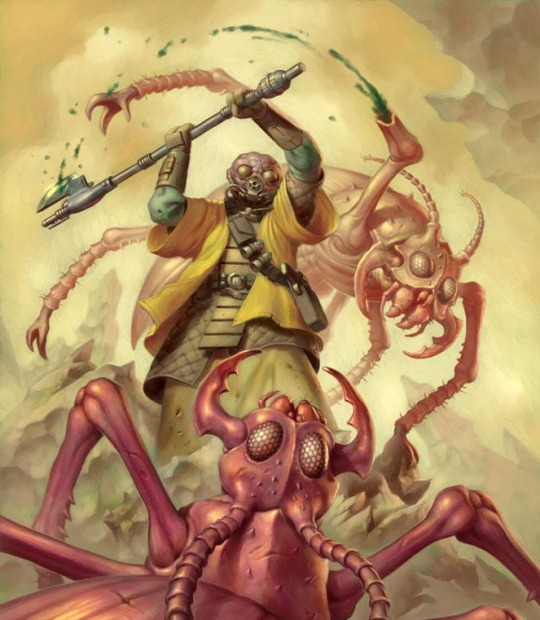
The Gands lived in pocket colonies that dotted the surface of their homeworld. These colonies, separated by seemingly endless kilometers of thick ammonia mists, were each ruled by Gand's central government. While some historians believed that the government of the Gand was a totalitarian monarchy, Gands did not possess a world for king or queen in their language, and no royal houses existed in their society. Scholars debated whether monarchies were isolated to colony worlds, if the species had moved away from this form of government, or if the original research into the government was confusing the insect-like characteristics for monarchy. During the Galactic Civil War, sociologists speculated that the Gand might govern themselves in a type of meritocratic democracy. Others theorized that the cultural and political shifts in Gand society were so frequent that the confusion derived from a rapidly changing environment. The Gands, while a primitive society, made use of galactic technology, and were proficient with the usage of advanced weaponry. However, they either outsourced their starship manufacturing to other companies, such as Byblos Drive Yards, or heavily modified captured ships, such as was done with the vehicles that were utilized by the ruetsavii. The Gand discharger was a weapon that was considered the pinnacle of Gand technology; dischargers could both paralyze or kill enemies, and they were very rare because few Gand earned them.
The planet's mists were influential in Gand culture, and the religious findsmen sects worshiped them, divining omens and signs from the currents to pinpoint the location of hidden prey. Gands had an active slave trade and penal system, and they employed the findsmen to locate runaway slaves and prisoners hiding in the enshrouding fog banks.
The Gands conducted trade and commerce on orbiting space stations that allowed visitors to avoid the poisonous atmosphere of the planet itself. Despite such contact with offworlders, Gands were seen as insular and somewhat xenophobic. Outsiders were rarely, if ever, allowed on the surface of Gand, as the insectoid species did not want their society to be tainted with the ideas of independence and self-worth that offworlders might bring. The few non-Gand allowed onto the planet were usually under the sponsorship of a janwuine Gand, or were considered hinwuine—beings of standing. Nevertheless, Gand protocol mandated that visitors tell no one of their time on Gand; to talk of such visits was considered an insult to their Gand hosts. In 7 ABY, General Airen Cracken and several other members of Rogue Squadron were invited onto Gand to witness the janwuine-jika ceremony for the pilot Ooryl Qrygg. Cracken admitted to finding the ceremony to be unsettling.


Gands or Gand, sentient, stocky humanoids whose insectoid bodies were covered in a chitinous exoskeleton. The natural, durable armor allowed the Gand to shrug off injuries that would cripple most other species. Zuckuss, a Gand bounty hunter, jumped from a third-story window, was caught in an explosion, and was even shot in the shoulder, yet he was able to continue his duties without so much as a disorienting effect. The Gand exoskeleton provided extra protection in the clavicle region, which prevented most nerve or pressure-point strikes to the neck and shoulders. In addition, Gands had the remarkable ability to regrow lost limbs. If a Gand was dismembered, it could regrow a lost limb in a few days.
The Gands possessed earholes, and large, compound eyes with a visual range that included the ultraviolet spectrum and afforded excellent night vision; however, they could not perceive colors in total darkness. The eyes were shielded with a keratin substance that served to protect them from airborne debris, such as that present in a sandstorm. Most Gands had three fingers on each hand; the digits were capable of punching through stormtrooper armor, as evidenced by Ooryl Qrygg, a Gand pilot with Rogue Squadron, on the planet Talasea. Their durability was utilized in a Gand martial arts technique known as "Piercing Touch."
The Gand species had two sexes: male and female. Despite the species' refusal to be studied, xenobiologists managed to document several of their physical variations, which included differences in exoskeleton color from brown to green, and purple. Even the shape of the head differed among individuals; some were rounded, while others, like Vaabesh, a Clone Wars–generation Gand Padawan, possessed elongated craniums. The head in some specimens divided into sections, while others had pronounced cranial ridges. Although most Gands possessed three fingers, there were a few, like the assassin R'Kayza, who had five. The surface of the exoskeleton varied, as some Gands exhibited pronounced plating, while others had a smoother texture. The eye color also varied from silver to gray, black, yellow, and turquoise.


Despite the widespread diversity, however, most Gands were classified into two subspecies: lungless and "breathers." Scientists were unsure if the breathers were of an older evolutionary stock destined to die out or further evolve, or if they were another viable race. Such Gands possessed lungs, along with the usual assortment of internal organs that were typical in most species.The lungs functioned rather efficiently, able to utilize nearly eighty–five percent of the atmosphere with each breath. Gands with lungs nevertheless were adapted to breathing only ammonia and required breath masks or similar equipment to survive in the more common oxygen–rich environments found on many planets. Oxygen exposure scoured the inside of the lungs like acid and required organ transplants if the Gand did not suffocate. If a Gand survived the initial exposure, that individual could display various respiratory symptoms, which included chest pain, shortness of breath, and coughing, which sometimes brought up blood. Since the proper bronchial and lung treatments necessary to repair the damage were uncommon off the species' homeworld, Gands stricken with oxygen inhalation were characterized by a high rate of mortality.
A breathing Gand was able to hold its breath when needed and induce a comatose state, which would reduce the perceptibility of bodily functions to a point where an observer might mistake them for dead. Zuckuss demonstrated the ability while working with another bounty hunter named Boba Fett; however, he made use of compressed ammonia canisters to extend respiration cessation for several days. The lungless Gand sub-species did not respire, as they obtained all the metabolic sustenance they needed through the ingestion of their food. Ingested materials aided in gas exchange, and waste passed through openings in the exoskeleton. This made lungless Gands immune to poisonous gases and allowed them to forgo respirators when they ventured offworld. Nevertheless, some lungless Gands wore such equipment anyway, usually to maintain anonymity.
Usually, Gands spoke their native language, also known as Gand, which to offworlders sounded like a jumble of drones and clicks. For communication with members of other species, however, lungless Gands required the aid of a muscular gas bladder. This organ, among its other uses, allowed the Gand to draw in gases and expel them at a controlled rate through pieces of the exoskeleton that vibrated to approximate speech. Such Gands also made use of translator vocoders to compensate for their lack of vocal cords. Although most Gands were incapable of speaking Basic, some Gand varieties were born with the proper organs and structure to speak other languages, Zuckuss being an example.

Gands needed only a fraction of the sleep normally required by Humans. This trait was common throughout the Gand varieties, so scientists attributed it to culture, rather than breeding. To stay awake and aware was more beneficial to the work of findsmen—a Force-sensitive religious tradition of bounty hunters that was unique to the Gand—and was a skill that was honed throughout a lifetime. Some of these findsman could communicate telepathically to all races within 60 meters of them. However, Gands were able to "store" the restorative properties of sleep for use when suspension of consciousness was inadvisable. Gands possessed regenerative abilities; for example, Ooryl Qrygg was able to regrow a severed arm within months, although he was assisted by a bacta cast. The exoskeleton appeared more pale and chalky in hue than normal until the regeneration process was complete. The consumption of alcohol often provoked a depressed mood in the species, and at least one Gand, Zuckuss, was known to suffer from schizophrenia and multiple personality disorder. Gands could also be afflicted with asthma.
A typical Gand male stands at 1.6 meters or 5.2 feet tall and weighs 80 kilograms or 176 pounds, while a typical Gand female stands at 1.4 meters or 4.6 feet tall and weighs 70 kilograms or 154 pounds.
Gands age at the following stages:
1 - 9 Child
10 - 14 Young Adult
15 - 29 Adult
30 - 45 Middle Age
46 - 60 Old
Examples of Names: Muulish, Ooryl, Shoolush, Vaabesh, Zaabahn, Zuckuss.
Languages: Gand lack the organs to speak any language other than Gand and, therefore, rely on Transliterators to communicate in other tongues.
8 notes
·
View notes
Text
Star Wars Alien Species - Gotal
The Gotal species evolved on Antar 4, the mineral-rich fourth moon of the gas giant Antar in the Prindaar system. As the moon of a gas giant, Antar 4 was a world with a complex day/night cycle. Sometimes, one side of Antar 4 would be illuminated by the sun Prindaar, while the other received almost the same amount of light from the highly reflective surface of the gas giant Antar. At other times, Antar would block all sunlight to both hemispheres. As light was not always available there, Antarian animal life could not rely on sight as a primary sense. To compensate for this, the ancestors of the Gotals evolved cranial horns as receptors to sense electromagnetism and other energy emissions.
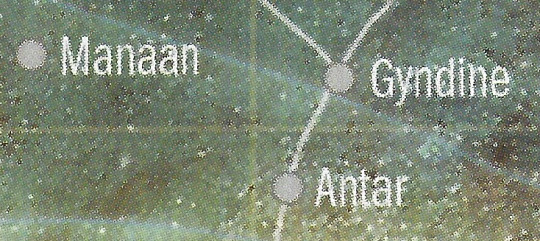
Although they were easily disoriented around devices that produced high levels of electromagnetic interference, the Gotals managed to develop quite sophisticated levels of technology. Using chemical reactions where other species would use electronics, the Gotals managed to colonize four of Antar's other five moons, and set up mining operations on the fifth, even before Galactic Republic explorers contacted them.
The Gotals joined the Galactic Republic between 25,000 and 22,000 BBY, becoming one of the first species to send representatives to its newly formed Galactic Senate. Kith Kark, a Jedi killed during the Freedon Nadd Uprising, is the earliest known Gotal to make his mark on galactic history. Goethar Kleej and his son Aubin came to prominence during the Mandalorian Wars a few decades later as swoop-duelists on the space station Jervo's World.
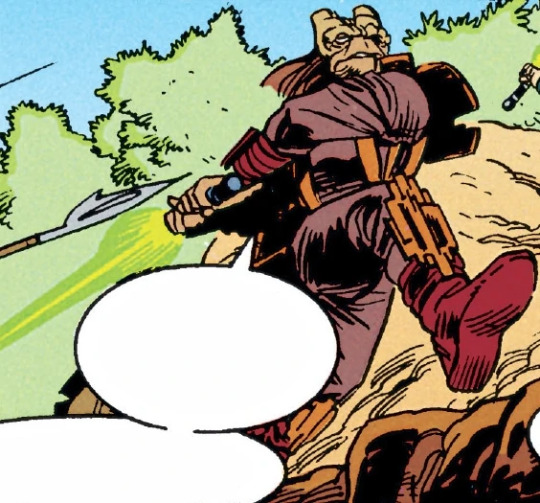
In later centuries, one of their most notable contributions to Republic society was the Antarian Rangers, founded in 620 BBY to assist the Jedi. Co-founded by the Human Jedi Master Marus Timpel and the Gotal businessman Kaskutal, this organization grew to become a major non-Jedi paramilitary auxiliary, working alongside the Jedi Order to protect the Galactic Republic.
In the Republic's final years, however, the relationship between the Gotals and the rest of the galaxy became increasingly strained. The Duinuogwuin-Gotal conflict was a short, but intense struggle which required the intervention of the Jedi Masters Jorus C'baoth and Tra's M'ins to bring to an end. Tensions between the Gotals and the rest of the galaxy continued over the next decade, however.
During the Separatist Crisis of 22 BBY, many Gotals supported the Gotal Assembly for Separation, or its more violent splinter group the Roshu Sune. After Roshu Sune terrorists set off bombs in Antarian Ranger chapterhouses, the Jedi and their Antarian Ranger allies invaded Antar 4 in retaliation. During the Battle of Antar 4, the Jedi and the Antarian Rangers took heavy casualties. They used electromagnetic pulse weapons in desperation, even though such weapons caused immense pain and disorientation for civilian Gotals caught in the crossfire. The Jedi response turned the Gotals, and the people of thousands of other worlds, against the Republic. After the battle, many Gotal refugees fled to Atzerri, leading to the Gotal hostage standoff. During this crisis, the Roshu Sune militants captured a commuter hopper that had 25 passengers, one of whom was Nathanjo Nirrelz. A taskforce of Jedi led by Sarrissa Jeng attempted to negotiate with the hijackers, but when blasterfire spooked the militants, they executed some of their hostages. The Jedi forced their way into the hopper and killed the Gotal militants. Gotal Foreign Affairs Commune leader Shagrad Loset castigated the Jedi for their "lightsaber diplomacy," asserting that the Gotals should have been allowed to solve the crisis themselves. Although a poll conducted by HoloNet News showed that a majority of respondents believed that violence was inevitable in the crisis, the events provided the impetus for the Clone Wars that engulfed the galaxy for the next few years. During the Clone Wars, Antar 4 was conquered by the Confederacy of Independent Systems. The Gotals did not benefit from the war, and were greatly impoverished during the Confederate occupation. Around this time, a Gotal team was entered in the Cularin Classic swoop race on the planet Cularin and was represented by the racer Arum Oru.

At the war's end, the Gotals became subjects of the Galactic Empire. The Imperial military refused to let Gotals serve in the military, believing they were too apt to empathize with their enemies. Only a minority of Gotals were willing to work with the Empire in any case, since their empathic sense led them to distrust the promises of Imperial diplomats.
During the time of the New Republic, Gotals were one of the nonhuman races targeted in Warlord Zsinj's plot to destabilize the New Republic. The operation was able to brainwash certain individuals to attempt to assassinate major leaders in the New Republic. Three of the targets included Wedge Antilles, Admiral Ackbar, and Mon Mothma, whose intended assassin was Tolokai, her trusted Gotal bodyguard. The intent of the operation was to breed distrust between Humans and prominent nonhuman races of the New Republic. The operation was ultimately foiled. By 9 ABY, the New Republic had liberated their homeworld, together with the rest of the Inner Rim Territories. At the end of the Yuuzhan Vong War, Antar 4 became a part of the Galactic Alliance. Gotal senator Ta'laam Ranth served on the Alliance's High Council as Minister of Justice. Circa 25 ABY, Antar 4's population was between one and ten billion. During the Yuuzhan Vong War, the Antar system was attacked by the Yuuzhan Vong. At some point during the New Republic's existence, the Shi'ido anthropologist Mammon Hoole included an entry on the Gotals in his publication The Essential Guide to Alien Species.
In 130 ABY, at least two Gotals were involved with the new Sith Order: an unnamed Sith who took part in the Massacre at Ossus, and the spy and information broker Attatag Gosem. By 137 ABY, the Antar system fell within territory controlled by Darth Krayt as part of his Sith Empire, and Gotals were still active in the galactic community.

In addition to sensing energy emissions in their environment and the presence of their prey animals, Gotals used their cones to monitor subtle changes in one another's electromagnetic auras. This ability to quickly and easily judge another Gotal's emotional state was fundamental to their culture. For example, Gotals were able to avoid angry members of their species, share in the joy of happy ones, and seek out depressed ones to cheer them up. Gotal communities were considered among the most harmonious civilizations in the galaxy. They had difficulty interpreting the emotions of other alien species, however, often mistaking basic emotions such as affection or anger for extremes such as love and murderous intent. Sufficient exposure to the galactic community could help them overcome this, however.
Gotals formed intense bonds with one another upon first meeting, and love at first "sight" was the norm among Gotals, whose empathic nature made the elaborate courtship rituals of other sentients unnecessary. Gotal would mate for life, and would bear young as soon as their lifestyles permitted it. Gotals only spoke to each other to relay abstract information, since they had no need to vocally express their emotions.
Young Gotals often had trouble assimilating the information arriving from their cones, and were in a constant state of agitated confusion until they learned to filter unwanted signals after about one standard year. Even then, it took them until the age of twelve to attain emotional maturity, and they could sometimes be nearly psychotic until then. Despite this, Gotal parents were devoted to their children. Mature Gotals were generally calm and peaceful individuals.
Gotal sensory cones allowed them to keep their emotions to themselves. They tended to keep a calm and restrained demeanor when dealing with others, speaking of emotions only abstractly. This led some non-Gotals to assume the species lacked emotion entirely, and many species to be uncomfortable around and mistrustful of Gotals. Some felt that they were at a disadvantage when dealing with Gotals and their sensitive head cones, and other, more superstitious species, were wary of what they saw as the Gotals' supernatural powers. Nevertheless, the quirks of Gotals made them effective diplomats, mediators, businesspeople, and gamblers. Unless they sensed evil intentions, Gotals were generally diplomatic and polite when interacting with members of other species.
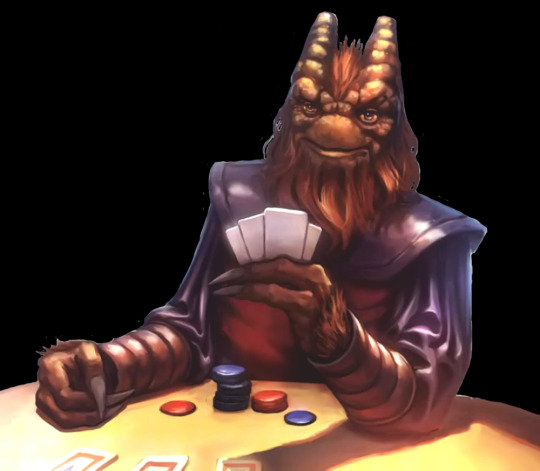
The ruthless Imperial era financier Sarlim Gastess was among the few Gotals whose cones were non-functional. Perhaps because of his inability to sense emotions, this "blind" Gotal was a fearsome psychopath by his people's standards.
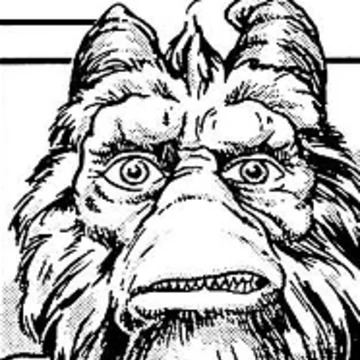
Some Gotals became romantically attached to non-Gotals, but they only seemed to be sexually attracted to other creatures with cones or horns on their heads.
Gotals possess cranial horns as receptors to sense electromagnetism and other energy emissions. These nerve-ending filled cones could sense the natural electromagnetic fields produced by Antar, Prindaar, and Antar 4's magnetite-rich crust, allowing the species to operate even in total darkness. Their senses also picked up the electromagnetic auras from other life forms. Gotal hunters could sense their quarry from up to ten kilometers away, and could track herds of quivry for weeks. While hunting, a Gotal could determine the amount, species type, and level of sickness of animals by relying on their cones alone. When close to their target, they could ascertain information on its mood, awareness, and state of mind. As such, Gotals numbered among the most sought-after hunters in the galaxy.

Gotal cones could detect another being's emotional state and intentions. Gotal horns were even sensitive enough to pick up such indistinct signals as neutrino emissions. Electronic devices could also be sensed by Gotals: in fact, most droids gave off enough electromagnetic emissions to at least annoy a Gotal, and at worst to seriously disorient the horned beings. Consequently, the species was notoriously distrustful of droids. Gotals relied heavily on their cones, with their eyesight and hearing being quite weak, and their sense of smell almost completely absent.
At least some Gotals were able to sense the Force with their cones. Nevertheless, standard reference works such as the Catalog of Intelligent Life in the Galaxy were silent on the subject, and the writings of Mammon Hoole described this as a rumor which had "yet to be proven." Other sources indicated that both the Jedi Order and the Galactic Empire had conducted inconclusive research which attempted to train Gotals to sense the Force. The records of the Gotals themselves were split on the issue. Those sources which did describe Gotals sensing the Force varied in their descriptions. Some sources described it as an intense, overwhelming sensation, while others treated it as a mere "indistinct buzzing." At least one Jedi Knight, Luke Skywalker, believed that sensing the Force could cause Gotals headaches. Any ability to sense the use of the Force with their cones did not hinder Gotals who were Force-sensitive in the conventional sense from learning to use the Force, however.
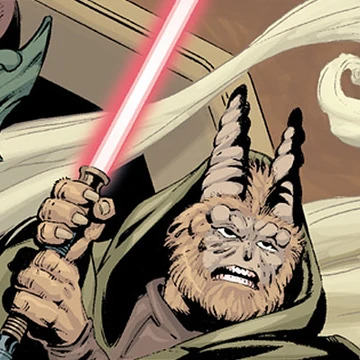
Gotals had flat, elongated faces with reddish, heavy-lidded eyes, small, flat noses, and a wide, downturned mouth full of blunt, yellow or white teeth. Their eyes varied in color, with individuals sporting shades of red, orange, yellow, gray, green, and black. Coarse, shaggy fur covered most of their bodies with the exception of the face, chest, and abdomen. Gotals were classified as mammals. Their overall body plan was humanoid, with proportions generally similar to Humans. Some Gotals had four fingers and a thumb with short, conical claws on each digit;[3] others had only four or three digits per limb with much longer claws making up a large portion of each finger. Their skin color varied from gray-brown to black, and their fur came in white or shades of brown or gray. While male Gotals typically had a thick fringe of hair around their cheeks and chins, this was absent in female Gotals. Gotals shed their fur and most Gotals learned to control this process. Under extreme stress or nerves, however—as when surprised or frightened—Gotals could lose control of this process and begin shedding large clumps of fur. Gotals' natural body odor was similar to the smell of mildew and old sweat. Gotals were resistant to the venom produced by members of the Killik species.
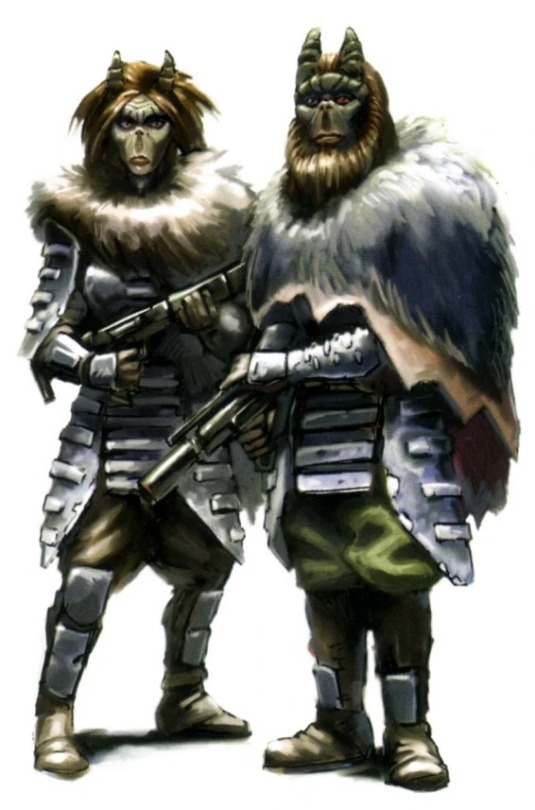
A typical Gotal stands at 1.8 meters or 5.9 feet tall and weighs 70 kilograms or 154 pounds.
Gotal age at the following stages:
1 - 9 Child
10 - 12 Young Adult
13 - 40 Adult
41 - 60 Middle Age
61 - 75 Old
Examples of Names: Abav Ghart, Glott, Kith Kark, Lishma, Mnor Nha, Pari Notgoth, Tolokai, To-yel.
Languages: Gotals speak Basic and Gotal. However, the form of Basic they speak is devoid of emotional context. The Gotal language is impossible for other Species to learn, because so much of it relies on feedback relayed through their head cones.
11 notes
·
View notes
Text
Star Wars Alien Species - H'nemthe
The planet H'nemthe had few viable exports save for minerals, and though H'nemthe were known to take jobs in the music industry, they rarely left their home planet. They had few visitors and imported little, occasionally trading for technology or ships. When the Galactic Empire took control of H'nemthe, many left to join the Rebel Alliance on Anoat. Following the Yuuzhan Vong War, the Galactic Alliance made overtures to the H'nemthe leaders in hopes of becoming trading partners with the species. At some point during the New Republic's rule, the Shi'ido anthropologist Mammon Hoole included an entry on the H'nemthe in his publication The Essential Guide to Alien Species.
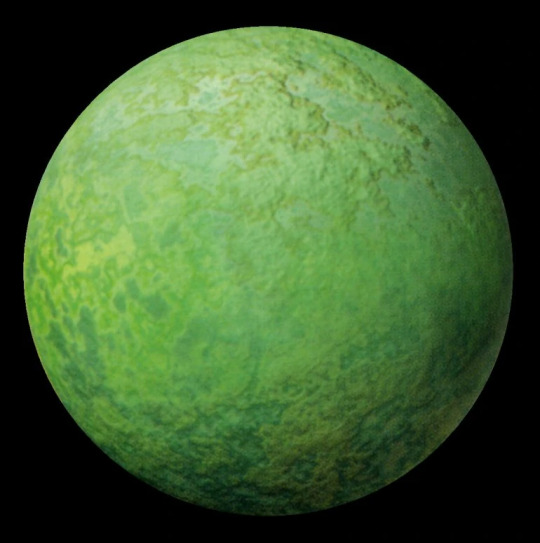
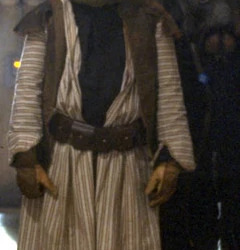
The highly structured H'nemthe society was shaped by the natural ratio of the H'nemthe sexes: only one female was born for every twenty males. Despite this imbalance, their culture was based primarily on the search for true love and the creation of new life, which they considered to be the ultimate in spiritual fulfillment.
When a female H'nemthe consummated her relationship with a male, she eviscerated him with her knife-shaped tongue, considering it a proof of love. As a result, male and female H'nemthe mated very rarely, and then only in the case of true love. Since virgin females were rare, they lived a sheltered existence, and were seldom allowed to leave their homeworld. Strict traditions also restricted virgin females to a vegetarian diet, ensuring that their first lover's flesh was the first meat they tasted. The males of the species were timid and spent a considerable amount of their adult lives looking for true love.
Many outsiders considered the deadly H'nemthe mating rituals to be a bizarre contradiction in an otherwise peaceful society. H'nemthe philosophers disagreed, however, pointing out that life coming from death was the way of the universe. In their beliefs, death was merely a change in form that paved the way for future generations. H'nemthe believed that a male killed after mating would receive the ultimate spiritual reward by going on to the netherworld to act as a spiritual guardian for his offspring, and males were thus unafraid of the certain death that would come their way if they found this love.
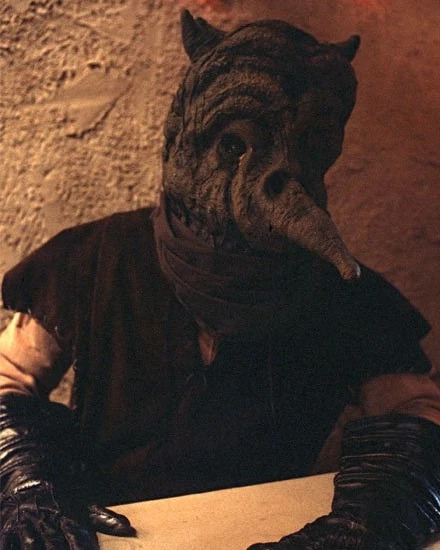
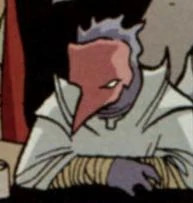
H'nemthe prized music, and their music in turn was considered pleasant by non-H'nemthe. They also valued calligraphy, and H'nemthe who had either of these skills were given great accord in their culture. Poetry was also very important to the H'nemthe, and it was traditional for lovers to write each other poems. Females especially were expected to be talented in the arts. H'nemthe also enjoyed sciences and history, and studied them to learn more and prepare themselves for potential leadership opportunities. However, the H'nemthe spoken language was considered unpleasant to outsiders, as it was squeaky.
The H'nemthe had a direct democracy on their planet, generally ruled by a female, as the males often had short lifespans due to the H'nemthe mating ritual. A Senate on H'nemthe consisted of delegates selected by local governments.

H'nemthe were humanoid reptilians. They had three fingers on their hands, and their skin varied between blue-gray and pink. They had long noses, green eyes, and ridged, bony faces. H'nemthe were omnivores.
H'nemthe had four small horns, actually sensory cones, on their heads. These cones were used much like the way Gotals used their cones—to sense electromagnetic fields and weather patterns. Their homeworld H'nemthe had very unusual and irregular weather patterns due to its three moons. These cones had thus evolved as an adaptation to the extreme weather patterns and variable lighting conditions on H'nemthe, helping them cope with the changing conditions. These cones were also able to sense heat differences in their environment as well as the emotional state of other beings, making them skilled hunters like the Gotals. However, the Gotals were not related to the H'nemthe.
The average H'nemthe stood 1.7 meters or 5.6 feet tall, the typical height of a Human.
H'nemthe age at the following stages:
1 - 6 Child
7 - 10 Young Adult
11 - 44 Adult
45 - 59 Middle Age
60 - 84 Old
Examples of Names: Garriel, H'rassh, Liakkor, S'basso, Vir'roc, Vishki.
Languages: H'nemthe speak a language comprised primarily of squeaks, squeals, and other noises that other sentients find irritating. The written form of H'nemthe uses a wispy, contiguous line to make letters that string together to form words.
3 notes
·
View notes
Text
Star Wars Alien Species - Shi'ido
The Shi'ido lived on the planet of Lao-mon, located in the Unknown Regions.
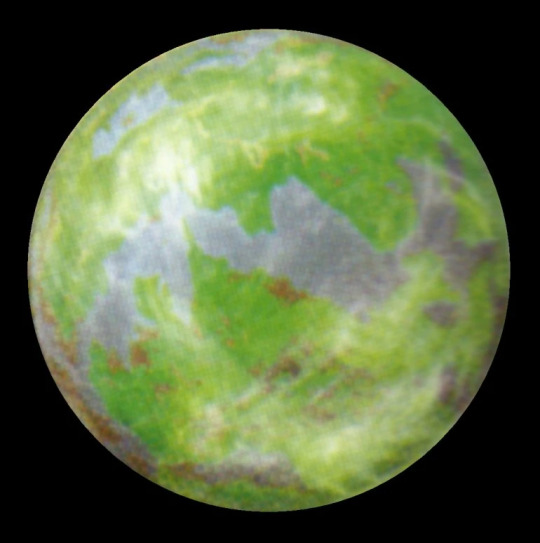
Shi'ido were known to be a shy yet curious species. They preferred to avoid confrontations with other species, especially on their homeworld. Despite their secretive nature, some Shi'ido—especially those of great age—could not resist the urge to travel the galaxy and study other cultures. Though due to their secretive nature and their natural abilities they were known to most as thieves, assassins, and spies, these types of Shi'ido were actually very rare.
The Shi'ido possessed a democratic government, which decided to remain isolated from any galactic powers.
They believed that all their relatives were part of their close family. That is why Mammon Hoole felt that he had to take care of the young Humans Tash and Zak Arranda when their parents died—in reality, Hoole was only related to the children because his brother had married their aunt Beryl.
Mammon Hoole stated at one point that whenever scout ships arrived on the planet, the Shi'ido populace would take the forms of rocks or trees to hide, or monstrous animals to scare the colonists away. Their government, a democracy, had decided to remain isolated from galactic affairs, and this decision remained in place at least until the time of the New Republic.

Belia Darzu was a Shi'ido who ventured out into the galaxy and became Dark Lord of the Sith, during the Sictis Wars. She reigned in this position from 1250 to 1230 BBY. Though she was powerful in the ways of the Force, and created monsters known as Technobeasts, she was killed by her fellow Sith Lords, poisoned by the Mecrosa Order.
Circa 1000 BBY, the Jedi textbook The Jedi Path: A Manual for Students of the Force mentioned Shi'ido within its pages, warning students that using the Force to influence Shi'ido was a difficult task at best, and not to underestimate them as opponents.
In 67 BBY, a Force-sensitive Shi'ido used his Force abilities to cheat in a string of casinos across the galaxy in order to provide funds for the heavily indebted Kerred Santhe the Second. His Force-sensetivity drew the attention of the Bith would-be Sith Lord Darth Venamis, who marked this Shi'ido as a potential apprentice. After Venamis' defeat and incapacitation by Darth Plagueis, the Muun Sith Lord tracked down this Shi'ido to a casino in Lianna City. Plagueis managed to chase down the Shi'ido and threatened him into disappearing to a place where neither the Galactic Gaming Commission nor Plagueis would be able to find him.
In the year 27 BBY, a group of Shi'ido mercenaries working for the former Jedi Knight Reess Kairn confronted the bounty hunter Aurra Sing, but all were killed by her.
By the time of the Clone Wars, two Shi'ido were working on the side of the Galactic Republic—Mammon Hoole and Borborygmus Gog. Both worked to counter the biological weapons of the Confederacy of Independent Systems. After the rise of the Galactic Empire, both Shi'ido remained in their positions, though their divergent beliefs would take them in vastly different directions. Another Shi'ido, Vandolae, also worked for the New Order, but he was killed by smugglers while impersonating one of their kind.
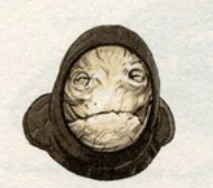
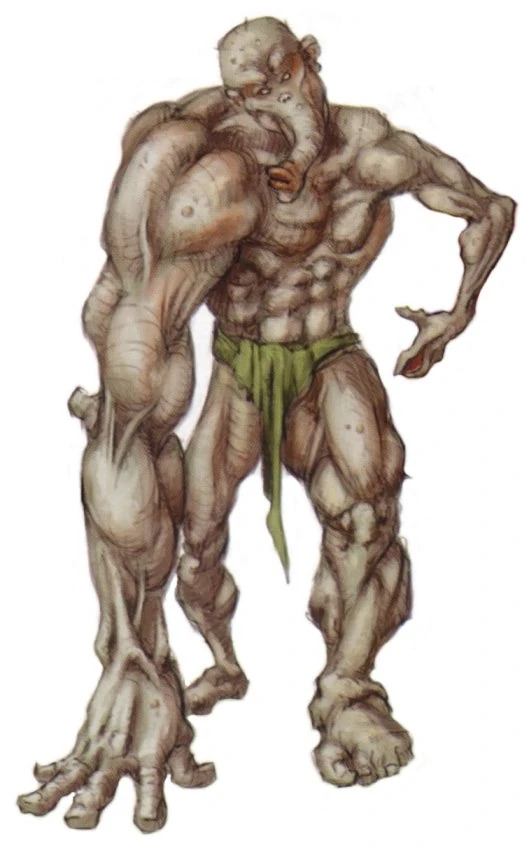
Little was actually known of the biology of the mysterious Shi'ido. In their natural forms, they were humanoids with pale skin, wide mouths, and deep set eyes. Their entire physiology was extremely pliable, and their skeletons were made of very thin, yet dense, bone. Their tendons were detachable, and could be moved about their body at will.
Due to their pliable structure, Shi'ido were able to mimic nearly any object or being, such as Humans or Rodians. They were also able to drastically increase their mass, and were known to have hidden flesh within their bodies that assisted in such transformations. In addition to this, Shi'ido were also able to change the texture of their skin to mimic rocks, trees, scales or fur. Senior Anthropologist Mammon Hoole, a member of the species, claimed to have taken the shape of a Hutt and a Whaladon at different times. It was known, however, that if a Shi'ido attempted to increase their size in such a manner, they could end up stuck in that form for several weeks to a few months. Unlike Clawdites, Shi'ido were not limited to taking the form of only humanoid species and did not feel pain or discomfort when they changed shape. Also, Shi'ido did not immediately revert back to their true form when they were fatigued or incapacitated as Clawdites did.
Young Shi'ido could only change the color of their skin and imitate similarly-shaped species, while individuals past the age of 150 could change into any small to large alien species or creature.
In order to complete the image that they sought, Shi'ido also possessed a form of telepathy. They used this ability to project false impressions upon those of other species, allowing them to cover up any inconsistencies with their transformations. This was extremely useful when studying species that identified each other through smell as well as sight, as a Shi'ido could project the feeling that they had the same exact scent as that particular species. Their telepathy required great concentration, and they would lose control of it if they were distracted. As with their shapeshifting abilities, this telepathy also grew more powerful with age.
They stand about 1.8 meters or 5.9 feet tall.
Shi'ido age at the following stages:
1 - 10 Child
11 - 60 Young Adult
61 - 210 Adult
211 - 360 Middle Age
361 - 500 Old
Examples of Names: Shi'ido change their names as often as they change forms, although a Shi'ido who settles on a world might keep the same name for hundreds of years. Sample names include Akarren Duufor, Borborygmus Gog, Mammon Hoole, lsoh Rykken. Shall Screel, and Xev Tallus.
Languages: Shi'idese is an ancient language that incorporates a wide range of vocalizations. Xenobiologists are uncertain whether a written form of Shi'idese exists. Shi'ido can learn to speak and read other languages and those who venture from their homeworld are quick to master Basic.
6 notes
·
View notes
Text
Wookiepedia On Spore
The Original Article is Here!
"About four hundred years ago, my people took their experiments too far. Using the genes of the vesuvague tree and the Bafforrs, along with some other things, they created a new form of life. Like the vesuvague, this creation snared its victims in its tentacle like vines. It also had a group mind like the Bafforr trees. However, unlike the wise Bafforrs, its mind was evil."―Fandomar Nadon
Spore was an ancient entity imprisoned 400 years before the Galactic Civil War in an asteroid by the Ithorians.
Spore was a genetic construct created by Ithorian botanists, who had hoped to merge the DNA of a Vesuvague tree and a bafforr tree with other material to create a sentient plant. Instead, they created a creature which absorbed other minds to expand its thoughts and work its destructive tendencies. The entity used the minds of almost any living creature to augment its own power. It was thought that Spore could control several thousand minds at one time.
Capture
The crisis began in the year 439 BBY. With the help of the Jedi Knights, it still took over 100 years for the Ithorians to capture and neutralize Spore, entombing the entity in an asteroid where it was forced into dormancy by the hard vacuum of space.The Ithorians refused to kill Spore, owing to their strict adherence to the Law of Life. When Mining Station Alpha was established on the asteroid to collect minerals, the Ithorians carefully monitored their progress, lest they discovered Spore's tomb. Unfortunately, the tomb was discovered by Hodge and his team shortly after the Battle of Yavin.
Release
Spore was released, and the ripples of darkness permeated the Force. Emperor Palpatine sent the Dark Jedi Jerec to capture Spore, but the entity had already escaped its prison and hidden itself in the body of the mining chief Hodge. Ithorian Fandomar was livid with fear, and rushed to escape the asteroid before Spore could infect anyone, but she was too late.She brought Hodge—and Spore—back to Ithor, and Spore attacked the rescue party that came to find them. Black vines snaked out from Hodge's mouth and eyes, entwining the Ithorians and eventually capturing the Shi'ido Mammon Hoole and Zak Arranda. Each vine that touched a being, infected it immediately. Spore was patient and knew it would eventually infect any Ithorian herdship. Jerec intercepted Spore on Ithor, and offered it the chance to get off the planet if it would infect the crew of the Vengeance and make them his slaves. Spore first attacked Jerec, but Jerec with his command of the Dark side of the Force, easily deflected Spore's vine. Spore then agreed, but had no intention of helping Jerec for very long. Spore then tried to capture Tash Arranda and Fandomar Nadon, but they led Spore into an asteroid belt infested with space slugs. The Space slugs attacked and destroyed the Vengeance deflector shields. Crushing asteroids then made holes in it large enough to expose Vengeance to the vacuum of space.
Defeat
Exposure to the vacuum of space caused Spore to disintegrate, neutralizing the creature, leaving only a small dark object floating in the void.
#okay but THIS SCREAMS AGRICORPS-WORK#I LOVE THE NOTION OF A PLANT BEEING A ANTAGONIST!#I LOVE SUCH IDEAS AND PLOTS IT FITS RIGHT INTO THE BLOGS THEME#bless wookiepedia for this!#BLESS IT#inspiration#I love the idea of plants or even forcesensetve plants beeing antagonists *-*#still want a plot ith a oasis mother#GIMME GIMME GIMME
2 notes
·
View notes